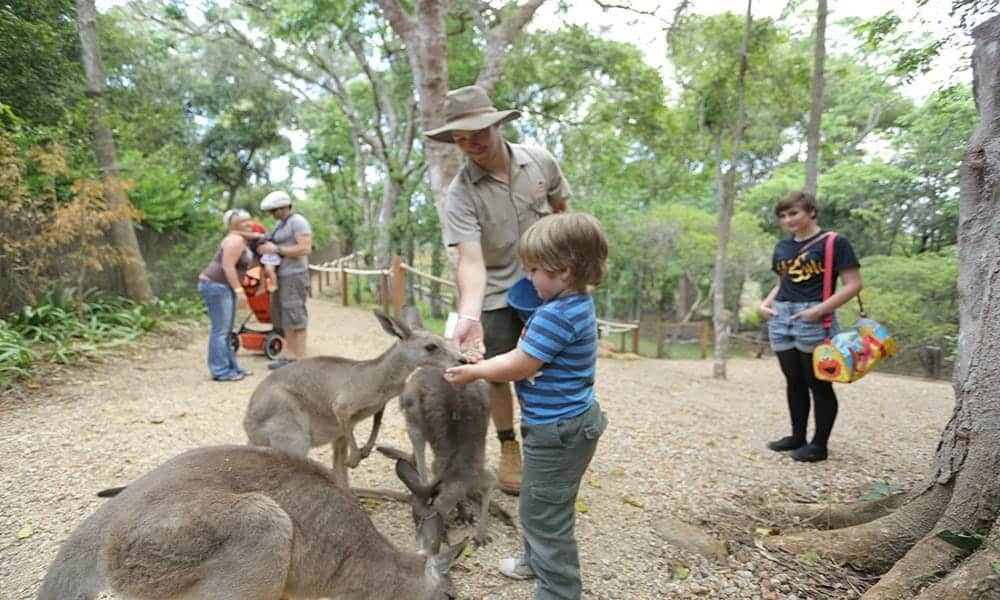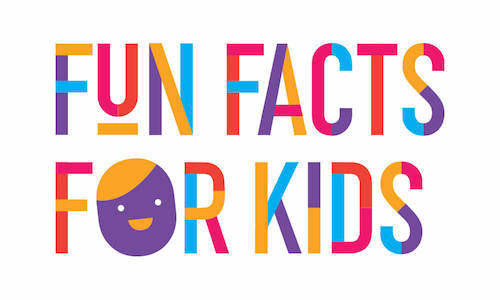Looking for kangaroo facts for kids? Australia is famous for a number of animals that can only be found in these lands and these jumping giants are one of those.
This article will give you all the kangaroo facts for kids that you need for your school project or your homework assignment.
We have put together some interesting facts about kangaroos for kids. So, if you are talking about Australian animals in school, or trying to find facts about kangaroos for kids for a fun project, this is a good place to start.
ALL ABOUT KANGAROOS FOR KIDS

Some basic information about kangaroos for kids:
- They are marsupials: This term means that they are mammals that have a pouch to carry their young. They are also part of a family of animals known as Macropus (literally means ‘big foot’). A newborn baby is a ‘joey’. The joey, once born, travels through mum’s fur to reach the pouch located at the front of the animal, near the belly, to develop further. They will stay in this pouch for approximately 10 months. The joey will venture out of the pouch before the 10 months (around 4 months of age) for short trips.
- The mother’s pouch: This is a safe place for the newborn joey to spend its time. Once born, the joey is completely without fur. They attach permanently to one of mum’s four teats which produces milk. Mum will feed the baby milk but has to help by pumping the milk into the baby’s throat as newborn joey’s are unable to do this without some assistance. From four months, the joey will come out of the pouch for short trips and feed on a little grass.
- Young Kangaroos: Female kangaroos have one baby yearly but are able to keep embryos dormant until a baby has moved out of the pouch. This is otherwise known as ‘embryonic diapause’. The gestation period ranges from 31 to 36 days so are born very quickly.
- Life of a Kangaroo: Kangaroos can live up to approximately 22-23 years in captivity. When born a kangaroo is only 2.5cm long. The female called ‘flyer’, ‘doe’ or ‘jill. Male kangaroos called ‘bucks’ or ‘boomers’. Kangaroos are particularly active at dawn or dusk (otherwise known as crepuscular). During these times of day they can be found looking for food which is typically grass or plants.
Check out these awesome kangaroo posters for kids!
KANGAROO HABITATS

The habitat of a species, is the environment they live in. Kangaroos live in Australia. They live in a variety of habitats including woodlands, coastal areas and even in urban areas (towns). They live in families known as ‘mobs’. These families are usually made up of around 10 females, their joeys and a couple of males.
Often you can see masses of families of kangaroos, especially if there is an abundance of food in a particular area. As mentioned, kangaroos feast on plants and grasses. They have a digestive system very similar to cows in that they can regurgitate their food which allows them to break food down (a process known as ‘chewing the cud’).
DANGERS THAT KANGAROOS FACE

There are quite a few dangers to kangaroos in Australia. Although it might be true that there are more kangaroo than people living in Australia, they still have to be careful! Climate change and bushfires sweeping through their environment have been of particular concern in recent times, however. Predators to the species include foxes, dingos and eagles.
Human activity can also cause issues; at dawn and dusk when most active, they can bounce across roads and into the path of oncoming traffic. If this should happen, motorists are encouraged to check the pouch to make sure the joey is safe. Many wildlife carers are around that can be called upon to help.
If you would like some stickers to embellish your school project, click here.
AUSTRALIAN KANGAROO FACTS FOR KIDS
Kangaroos are jumping animals. The powerful hind legs of the kangaroo allow them to be able to jump to a height of up to 9 metres! Kangaroos can grow to over 2 metres in height and males are usually the larger. They can travel in speed – up to 56 kilometres per hour. The powerful tail of the kangaroo, acts as a balancing tool but also acts as an additional limb for moving.
There are four different species (types) of kangaroos):
Red Kangaroos
These are the largest species. They can grow over 2 metres in height and up to 90 kilograms in weight. As the name suggests, they are reddish in colour. They are usually found in central Australia.
Find out more about red kangaroos here.
Antilopine Kangaroos
Slightly smaller than Red Kangaroos and slimmer but very fast. Normally found in the northern hills of Australia (tropics).
Find out more about Antilopine kangaroos here.
Western Grey Kangaroos
Usually located in South Australia and on Kangaroo Island. They are brown in colour with a pale chest area.
Find out more about Western Grey kangaroos here.
Eastern Grey Kangaroos
Inhabit Eastern Australian coastline and can be found in Tasmania (the only breed to be found here). They have a black-tipped tail and are brown in colour.
Kangaroos can also be found in Papua New Guinea (and some parts of Australia, particularly far north Queensland) known as the Tree Kangaroo and yes, as the name suggests, they live in trees!
Find out more about Eastern Grey kangaroos here.
FUN FACTS ABOUT KANGAROOS

- They are unable to walk backwards! They can walk forwards using all four legs (very slowly) but are usually found jumping around.
- Kangaroos live an average of 6 years in the wild but can live up to 23 years.
- They can swim – they use their tail to drive them through the water.
- Kangaroos hiss and growl when spooked. Female kangaroos communicate with their joeys by ‘clicking’.
- Kangaroos box! Fighting is a way of life for Kangaroos. Sometimes this is playfighting between members of the ‘mob’. Other times this can be more aggressive between males competing for a female’s attention.
- Kangaroos are usually placid creatures when left alone. However, they can attack if they feel threatened or provoked. If you come across one, always keep a safe distance from them. They have particularly strong hind legs and large claws – the combination can be lethal if attacked!
- Kangaroo meat is full of protein and available to purchase at local supermarkets (similar to beef, lamb and pork).
- Kangaroos can go months without water!
- They have excellent eyesight and the eye positioning allows 300 degree sight.
- Kangaroos can jump extremely high – often three times their height.
- The largest marsupial in the world is the Red Kangaroo.
- When kangaroos jump they use both hind legs together – when swimming they can use the hind legs separately!
- Wallabies are similar to kangaroos but their main difference is height – wallabies rarely reach heights of over 1 metre.
HOW CAN WE HELP KANGAROOS?
If you are wanting more facts for kids about Kangaroos, why not visit your local wildlife venue or zoo to find out more. Some wildlife sanctuaries even allow you to get up close and personal and you can feed them special kangaroo treats! Check if there are any ongoing local projects, particularly those affected by drought or bushfires in recent times.
If you would like to learn more about kangaroos, check out these kangaroo books for kids here.
MORE FACTS FOR KIDS
If you are looking for more great facts for kids to help with projects, check out our articles:
Animal facts for kids
- Ant Facts for Kids
- Crocodile Facts for Kids
- Dolphin Facts for Kids
- Echidna Facts for Kids
- Bee Facts for Kids
- Australia’s Deadliest Animals Facts for Kids
- Tasmanian Tiger Facts for Kids
- Cheetah Facts for Kids
- Endangered Animals Facts for Kids
- Possum Facts for Kids
- Koala Facts for Kids
- Quokka Facts for Kids
- Dog Facts for Kids
- Cat Facts for Kids
- Butterflies Facts for Kids
- Dingo Facts for Kids
- Turtle Facts for Kids
- Penguin Facts for Kids
- Whale Facts for Kids
- Wolf Facts for Kids
- Sustainability Facts for Kids
- Recycling Facts for Kids

